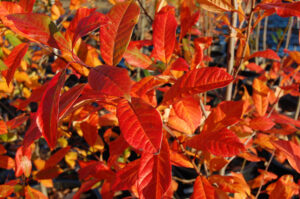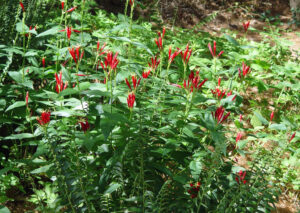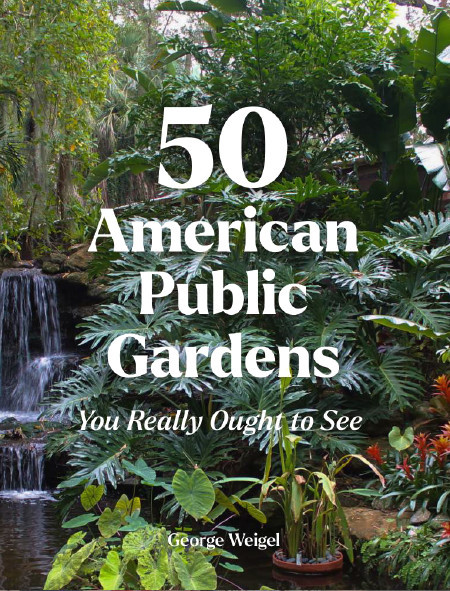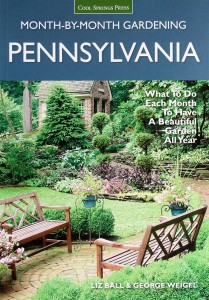Under-Rated, Under-Used Underdogs of the Plant World
April 8th, 2025
Some plants are way over-used – even though they’re trouble-plagued – simply because they’re familiar.

The fall foliage of blackgum ‘Wildfire.’
Others are way under-used – even though they’re virtually bullet-proof – simply because they’re not well known.
The arrival of a new gardening season is a good time to do something about that imbalance… to opt for some of the underdogs that need a better PR agent. Consider these under-used plants in each of 12 different planting categories on your spring-planting radar:
* Big tree: Blackgum (Nyssa sylvatica). I especially like the ‘Wildfire’ variety of this Pennsylvania-native shade tree. The new leaves are red, and the whole tree turns a showy maroon-red color that rivals maples for fall interest. Will grow about 40 by 25 feet. Best in full sun.
* Small tree: American fringetree (Chionanthus virginicus). The shaggy, white, confetti-like spring flowers make this one an unfamiliar head-turner, even though it’s a Pennsylvania native. Figure on about 18 feet tall and wide. Sun or part shade.
* Evergreen tree: Weeping Alaska-cedar (Xanthocyparis nootkatensis). Emerald-green soft needles drip from the sagging branches to make an elegant specimen. Narrow grower at about 20 feet tall and 10 feet across. Sun or light shade.
* Flowering shrub for sun: dwarf panicle hydrangeas (Hydrangea paniculata). These summer-blooming hydrangeas aren’t as well known as classic June-blooming mophead hydrangeas. The panicle types have cone-shaped pink flowers that last for weeks from July into fall. And they do fine in sun or part shade.
Check out varieties such as Fire Light Tidbit, Bobo, Little Quick Fire, and WorryFree Love-a-Lot. These grow three to five feet tall and wide.
* Flowering shrub for shade: Dwarf witch alder (Fothergilla). A native shrub that gets licorice-scented, bottle-brush white flowers in early spring and then neon red-gold foliage in fall. It glows almost into December. 5 to 6 feet tall and wide.

Fothergilla ‘Mt. Airy’ in bloom in April.
* Evergreen shrub: dwarf Hinoki cypress (Chamaecyparis obtusa). A soft-needled slow-grower that comes in green- or gold-foliage versions and habits ranging from narrow upright to globe-shaped. All are durable, low-care and trouble-free. Sun or part shade.
* Perennial for sun: Threadleaf bluestar (Amsonia hubrichtii). A tall, U.S. prairie native that gets light-blue flowers at the top of the 3-foot stems in spring and then graces the landscape with finely textured green-gold foliage that turns burnt gold in fall.
Lots of others qualify for this category, such as the agastaches ‘Black Adder,’ ‘Pink Pearl,’ and the Summerlong series, black-eyed susan ‘American Gold Rush,’ betony ‘Hummelo,’ coreopsis ‘Zagreb,’ purple coneflower ‘PowWow Wild Berry,’ and hardy geranium ‘Azure Rush.’
* Perennial for shade: Foamybell (Heucherella). Combine a foamflower with a coralbell (both solid performers themselves), and you get the best of both plants in a foamybell. Foamybells have wide, colorful leaves (especially check out ‘Sweet Tea’) and dainty, wand-like flowers on wiry stems. 15 to 18 inches tall.

A patch of Indian pinks in bloom in June.
* Native plant: Indian pinks (Spigelia marilandica). Despite being a trouble-free Eastern U.S. native perennial, this one isn’t even widely sold. It gets red tubular flowers in June that pollinators love. 18 to 20 inches tall. Best in part shade.
* Ornamental grass: golden variegated Japanese forest grass (Hakonechloa macra ‘Aureola’). This arching grass has green and gold blades that light up the shade. Makes a showy edging plant along a path or walk. 2 feet tall.
In a sunny spot, check out one of the many excellent varieties of native little bluestem (Schizachyrium scoparium). These grow to a compact three feet and turn a nice shade of russet in the fall. Good choices include ‘Carousel,’ ‘The Blues,’ and ‘Standing Ovation.’
* Groundcover for sun: creeping sedum ‘Angelina’ (Sedum rupestre). A 4-inch creeper that makes a compact, ferny-looking mat of gold all summer, then turns burnt orange over winter before “golding” back up in spring. Laughs off drought and gets small clusters of yellow flowers in late spring.
* Groundcover for shade: barrenwort (Epimedium). Heart-shaped leaves start out with reddish tinges, leading into a spring bloom of small, hanging, bell-shaped flowers of yellow or pink. Makes a behaved colony that does well even in the dry shade and root competition of big trees. 12 to 15 inches tall.







